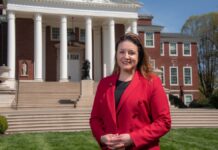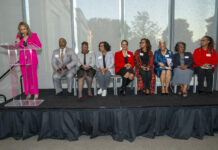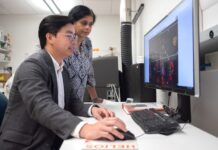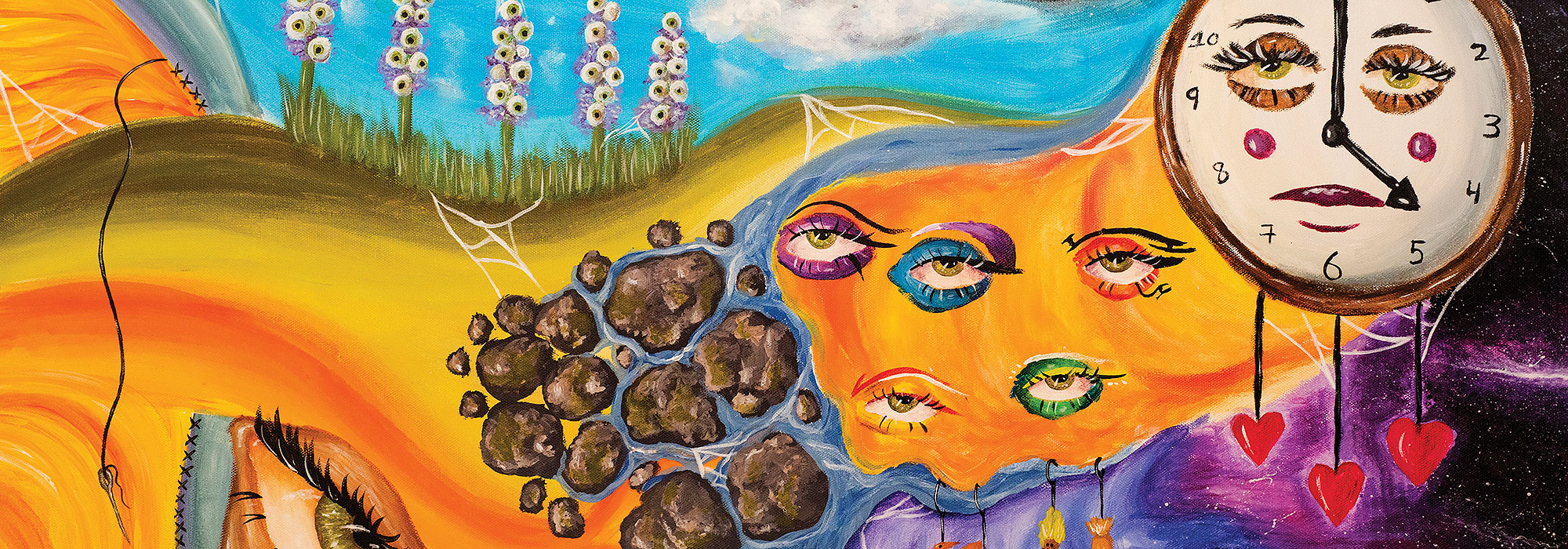Centered on the Belknap Campus is the College of Education and Human Development’s Porter Building — a friendly place, well-known for guiding students in their journey to become teachers.
Nestled in the corner of the building is a room that stands out amongst the rest. Once inside, it’s as though you’ve stepped into an art gallery. There is scarcely an inch of wall not covered in color. A deep sink is filled with encrusted paintbrushes. Cubbies line one wall, each labeled with a student’s name and stuffed to the brim with collages, paintings and drawings.
The space is home to the college’s art therapy master’s program. Here, students are taught to be healers, and art is their emphasis.
“It’s a form of therapy that really transcends age group and demographics,” Amy Mattingly ’22 said. “Geriatrics, pediatrics, clients who have experienced trauma or have recently been in an accident … I have seen every population benefit from using art as a form of processing what they have been through.”
Mattingly speaks from personal experience and understanding, having completed a practicum placement at UofL Hospital Trauma Center, part of UofL Health.
“No matter what you have going on, art offers us the unique ability to process through things,” Mattingly said. “Often, we can’t verbalize our trauma, but we can use our hands to silently process through it. Sometimes, words aren’t enough. Art bridges that gap.”
Luke Gipperich, a second-year student, has seen the power of art working with children through Open Door Youth Services, a southern Indiana foster care shelter. “I couldn’t imagine doing anything else,” he said.
“Art creates this kind of third-space,” Gipperich said. “It’s a space that isn’t tied to their productivity, it’s not tied to their circumstances. It isn’t something they need to work out in school or with a case manager. It’s a space where they know that whatever they put out, it’s safe.
“Art shows them that they have a voice. It gives them a space to feel heard.”
Leading the way
The art therapy master’s program is unique — not only across UofL’s campus but across Kentucky as well. It is the only program of the discipline in the state and, founded in 1968, one of the first of its kind in the United States.
Eileen Estes ’91, the program’s director, along with Marybeth Orton ’93, the clinical coordinator and an instructor, have watched the program f lourish over the past two decades.
“When I started as program director in 2005, I had five students taking my courses,” Estes said. “Now, we have 41 students enrolled in the program.”
It’s the largest class yet, and the growth is a nod to the recognition among mental health professionals of art therapy as a distinct and unique means for healing.
“It really is a form of therapy that works regardless of the client or population,” Orton said. “It’s something I think that therapists have historically known but that neuroscience has had to catch up to — that we store trauma within our bodies. What our brain can’t always figure out how to say can be expressed with our bodies. We can say it through art.
“It’s a beautiful language when we may not have access to words,” she said.
Another testament to the program’s success is the dedication of Estes and Orton — themselves alumnae of the program. Estes graduated with her degree in expressive therapies in 1991, and Orton soon after in 1993. Estes went on to work in a hospital setting and became a faculty member at Jefferson Community and Technical College. Orton worked in a private practice. Both returned to their alma mater, giving back to the program they believed in so strongly.
Under their leadership, the program has matured to its current level of success. They partner with over 30 sites throughout Louisville and southern Indiana regions, placing students in settings ranging from women’s prisons to nursing homes, residential facilities to hospitals.
Seeing the impact
Graduates of the program are in high demand, with alumni working in settings across the country and a near 100% employment rate upon degree completion.
Jenson Maydew ’20 is one such graduate who now works as an art therapist with University of Kentucky Healthcare.
“I was always into art,” Maydew said. “I had a baby easel and I was always drawing, always painting. My best friend’s brother was later diagnosed with leukemia. Part of his treatment was art therapy. I knew right then that it was my future career.”
For Maydew, the proof of art therapy’s effectiveness lies in the difference she sees in her patients from the beginning of their treatment to the end.
“It’s the growth you see in people through their work,” Maydew said. “We can measure it, sure. But you can see it. When they start treatment, they’re choosing to paint with reds and blacks. It’s harsh. When they complete their treatment, they’re choosing lighter colors; the composition of their work changes. It’s night and day.”
Mattingly, who hopes to eventually work in a trauma center, recited some of the more impactful moments she has encountered.
“I worked in a setting with victims of interpersonal gun violence, many of whom were young boys,” she said. “We did an activity together called the ‘Inside-Outside Mask.’ The kids decorated a mask on the outside to reflect what the world sees and on the inside to reflect how they see themselves. They were able to verbalize then the way the world had pigeonholed them, and how that impacted their story. It was cathartic. They had a space to verbalize how they really see themselves.”

























